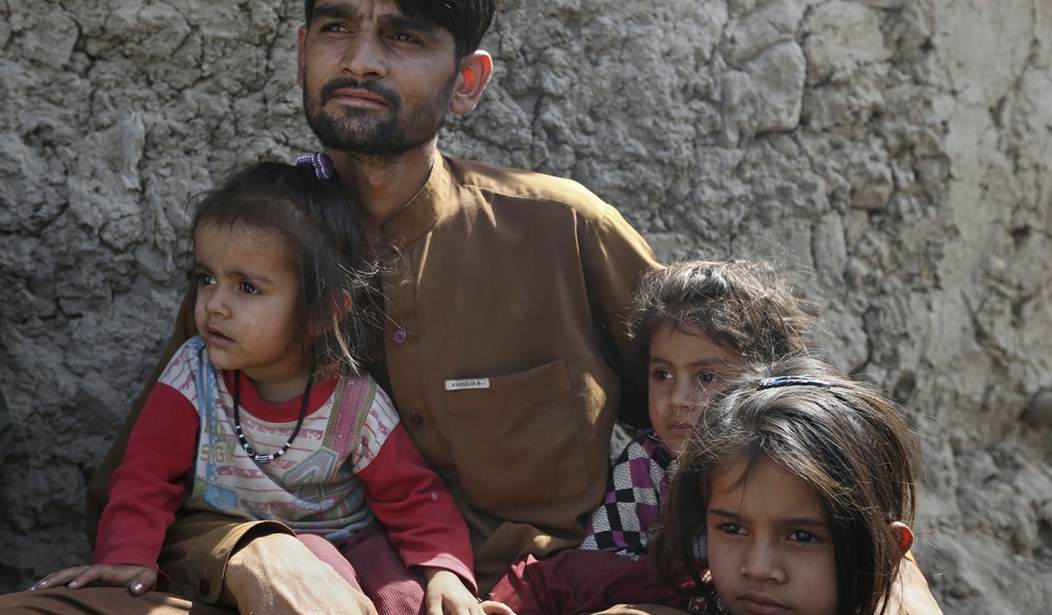Tens of millions of Afghans do not have access to food, and unfortunately the number will likely increase during the coming winter months. The tragedy stems in part from the catastrophic and immoral withdrawal of our troops by the Biden administration four months ago.
Taliban thugs acknowledged the country’s economic woes, but deem claims of any sort of crisis “fake.”
“No one will starve cause there is no famine and the cities are full of food,” Taliban spokesperson Zabihullah Mujahid told CNN.
This completely contradicts horrifying images of starving children.
I wrote about the high-profile pundits whose hearts bled for "the people of Afghanistan" last August when the US withdrew but are now silent about the US role in unleashing a mass starvation crisis in Afghanistan via sanctions and asset seizures.https://t.co/hu79dYcrHg
— Adam H. Johnson (@adamjohnsonNYC) December 21, 2021
More than 9 million Afghans — 3 million of those being children — are expected to suffer from life-threatening malnutrition in the next week or two, with at least a million at risk of death, a World Health Organization spokesperson recently projected.
Roughly 23 million Afghans overall — more than half the country’s 39 million population — are expected to face “acute food insecurity” through March 2022, according to the Integrated Food Security Phase Classification.
That is a 35% increase from the same time period last year, and the highest ever for the troubled country. And this is a real famine, not the kind we hear about in America and the West.
More than nine in 10 Afghans had insufficient food consumption roughly a month after the Taliban overthrew the Ashraf Ghani government, nearly 15 percentage points higher than on the day it collapsed, according to a fall release from the World Food Program’s (WFP) Afghanistan Food Security Update.
Now in late December, much of the harvest has run out, while citizens struggle with additional challenges, like fewer labor opportunities compared to planting season.
The percentage of families reporting challenges to market accessibility increased from 18 to almost 25% as a result of security concerns stemming from the Taliban’s takeover.
The United States froze roughly $10 billion in funds that belonged to the Taliban; this has contributed to the economic downturn. The International Monetary Fund also blocked the release of roughly $450 million in the week after the Taliban’s rise this summer.
Since then, Taliban officials have asked the U.S. to grant them access to those funds.
“The country is on the brink of economic collapse, with the local currency at an all-time low and food prices on the rise,” the WFP website explains. “Almost half of children under 5 and a quarter of pregnant and breastfeeding women need life-saving nutrition support in the next 12 months.”
They claim the three factors contributing most to the ongoing food crisis are drought, conflict, and the government’s collapse.
Related: Afghanistan Catastrophe Exposes Democrats’ Elitism and Incompetence
Money and its depreciation, of course, is also a major issue.
The Afghan currency, the afghani, is at a 10-year low. The Associated Press reports that it traded at about 80 to the dollar in August, but it rose to more than 110 briefly earlier this month.
Earlier this month, more than three dozen U.S. House members asked the State and Treasury Departments to act to “prevent a humanitarian disaster” — without helping the Taliban government.
Whatever your views are on foreign policy and intervention, take a moment from Christmas Day presents and meals to pray for those suffering in Afghanistan and around the globe.









Join the conversation as a VIP Member